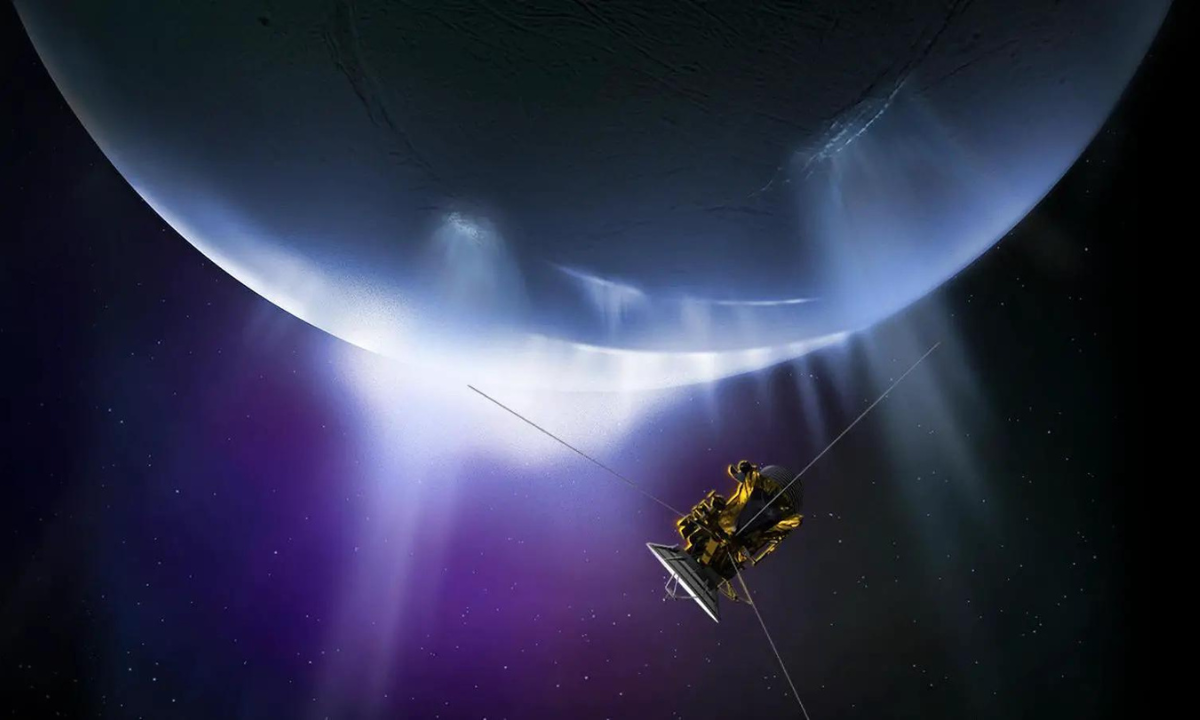Enceladus, Saturn's largest moon, has been observed by the James Webb Space Telescope, which discovered water vapor plumes rising from the surface.
The plumes are nearly 9,000 km long, providing a so far unseen perspective of the source.
The water outflows from the Moon surrounding Saturn have never before been directly seen across such a vast distance by astronomers. According to NASA, the finding may show how this emission supplies the water for Saturn's complete system, including its rings.

Observatories have previously identified jets that are thousands of kilometers from the moon's surface but "Webb’s exquisite sensitivity reveals a new story".
“When I was looking at the data, at first, I was thinking I had to be wrong. It was just so shocking to detect a water plume more than 20 times the size of the moon. The water plume extends far beyond its release region at the southern pole,” lead author Geronimo Villanueva, said in a statement.
The moon Enceladus, which orbits Saturn, is an ocean world with a diameter of slightly over 500 km. It is over 4% the size of Earth. Between the frozen outside crust and the rocky interior of the moon is a reserve of salty water.

"Geyser-like volcanos spew jets of ice particles, water vapour, and organic chemicals out of crevices in the moon’s surface informally called ‘tiger stripes," Nasa said.
In addition, the studies showed that the moon is ejecting water vapour at a surprising pace of roughly 79 gallons per second, which could quickly fill an Olympic-sized swimming pool.
“The orbit of Enceladus around Saturn is relatively quick, just 33 hours. As it whips around Saturn, the moon and its jets are basically spitting off the water, leaving a halo, almost like a doughnut, in its wake. In the Webb observations, not only was the plume huge but there was just water absolutely everywhere,” said Villanueva.
Previously, NASA's Cassini mission photographed and analyzed the jet plumes on the Moon as it passed right through them.
What's even more intriguing is that the water still exists in Saturn's outermost ring, known as the torus. Astronomers have estimated that about 30% of the water on the moon stays inside this torus, and Webb's observations clearly showed how the torus is fed by the moon's water vapour plumes.
“Right now, Webb provides a unique way to directly measure how water evolves and changes over time across Enceladus' immense plume, and as we see here, we will even make new discoveries and learn more about the composition of the underlying ocean,” added co-author Stefanie Milam.
© Copyright 2023. All Rights Reserved Powered by Vygr Media.
























